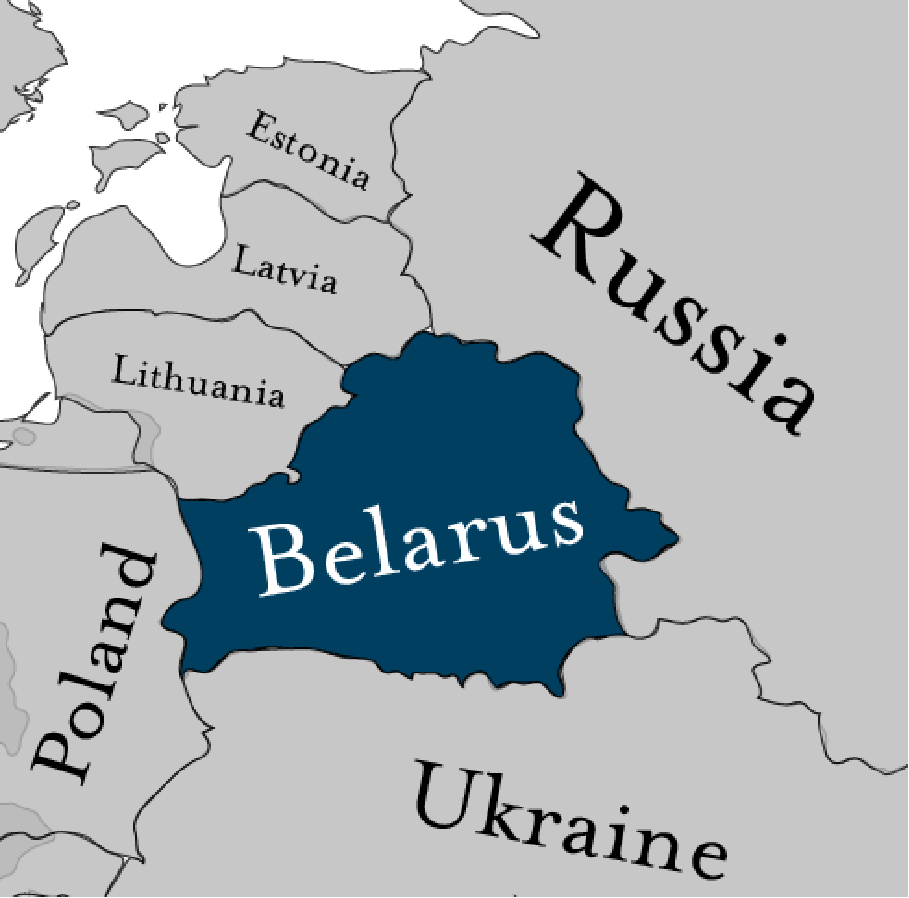August 15, 2020, 12:00 pm EDT
By George Barros and Mason Clark
A Russian hybrid intervention into Belarus to support Belarussian president Lukashenko is likely imminent. Russian President Vladimir Putin and Belarusian President Alexander Lukashenko had a phone call on August 15 to discuss the situation in Belarus. Putin thanked Lukashenko for returning 32 detained Wagner personnel on August 14. The Kremlin’s readout of the call stated “all problems that have arisen will be resolved soon” and characterized the protests as “destructive forces” trying to harm the Union State.[1] A Kremlin intervention would likely consist of Russian forces in unmarked uniforms supporting crackdowns on protesters. The Kremlin has not previously characterized the protests in Belarus as destructive. Kremlin-linked media outlets reported neutrally and slightly sympathetically towards protests in Belarus as of August 14.
The Union State is a supranational organization between Belarus and Russia. The Kremlin has been working to strengthen the Union State as a way to regain dominance over Belarus and integrate the Belarussian and Russian militaries. Success in that endeavor could allow Russian military forces to be stationed directly on the Polish border and in vital locations threatening NATO’s ability to defend the Baltic States.
Prior to his call with Putin Lukashenko held a meeting in Minsk on August 15 with Belarusian officials to discuss the situation in the country during which Lukashenko said the protests are “aggression against Belarus” and that Belarus “needs to reach out to Putin.”[2] This open request for help from Russia marked a sharp change in the tone Lukashenko has been using, as he has previously been accusing Russia of interfering in the elections and in Belarussian internal affairs. He has sought to gain leverage on Putin and refusing to cooperate with Putin’s efforts to strengthen the Union State. Lukashenko rationalized the need to engage the Kremlin at this time by characterizing the protests as foreign aggression against Belarus. Lukashenko claimed the threat faces not only Belarus, but the whole Union State, including Russia. Lukashenko likely used this meeting to acknowledge Putin’s objective to prevent a pro-democratic revolution in Belarus similar to the 2014 Euromaidan revolution in Ukraine.
The Belarusian Forestry Ministry placed bans on visiting 53 forests in Belarus, including almost all of the Gomel region’s forested areas. Gomel borders Russia’s Bryansk region. This action may be preparation for the Kremlin to insert irregular forces into Belarus’ south.[3] Russia’s Western Military District Commander Alexander Zhuravlev examined Russia’s fleet of military vehicles in the Bryansk region on August 14.[4] Bryansk is 110 kilometers from the Russian-Belarusian border.
Belarusian authorities have partially blocked Belarusians’ access to the internet since Lukashenko’s highly falsified presidential election on August 9.[5]
Video emerged allegedly showing Russian forces near Belarus IVO the highway from Smolensk to Vitebsk. Video footage surfaced on August 13 depicting a column of Russian hardware parked on the alleged shoulder of the highway from Smolensk, Russia to Vitebsk, Belarus.[6] The column included seven transport trucks and five Katyusha rocket launcher trucks. It is unclear whether the footage is actually from Smolensk or August 2020; the footage could be from a different location and/or from a previous date.
Support for Lukashenko in the Belarusian military continues to weaken. Men in Belarusian airborne infantry uniforms (VDV) are participating in ongoing protests in Minsk as of August 15.[7] It is unclear whether these persons are actual VDV personnel, veterans or active servicemembers. The Kremlin likely seeks to avoid having to intervene in Belarus but will do so if Lukashenko appears likely to lose control over his security services.
These indicators reinforce the ISW’s initial warning on a Kremlin irregular intervention in Belarus.[8] ISW will continue monitoring the situation and providing updates.
[1] http://kremlin(.)ru/events/president/news/63893[2] https://www.belta(.)by/president/view/lukashenko-ne-nado-ubajukivat-mirnymi-aktsijami-my-vidim-chto-v-glubine-proishodit-402937-2020/; https://twitter.com/TadeuszGiczan/status/1294557687859077120[3] The Belorusian Forestry Ministry conducted a similar ban on visiting forests in June 2020 likely unrelated to a Russian intervention into Belarus.https://www.belta(.)by/society/view/zaprety-i-ogranichenija-na-poseschenie-lesov-dejstvujut-v-53-rajonah-belarusi-402940-2020[4] https://gorod-tv(.)com/news/obschestvo/92120[5] https://netblocks.org/reports/internet-disruption-hits-belarus-on-election-day-YAE2jKB3[6] https://www.dialog(.)ua/world/213228_1597348991[7] https://twitter.com/eye_ii_eye/status/1294585189742583809[8] http://www.iswresearch.org/2020/08/warning-russia-may-send-little-green.html

